
The northern area of Israel contains some of the most interesting historical and biblical sites, from the ancient gates of Dan, to the mountain springs of Caesarea Philippi, to the volcanic remains of the Bashan. These sites stand out not only for the places where the Biblical account intersects with history, but also for the prophetic symbolism that permeates the areas.
The north is not looked upon favorably in Scripture. It is a place where enemies come from, the psalms of David speak of “the Bulls of Bashan surrounding me.” (Psalm 22:12) Joshua fought against Og, King of Bashan who was a giant. (Numbers 21:33). The Assyrians, the Babylonians, the Greeks, and the Romans all invaded the land from the north. All these enemies brought with them pagan gods and idolatry, some of which was adopted into the worship of the Israelites.
This permeation of paganism is on full display at the site of Dan. Once a thriving Canaanite city during the time of Abraham, it became the hometown of the tribe of Dan after the Philistines drove them from their allotted tribal lands following the death of Samson. The excavations of Dan found not only a thriving Israelite settlement, but also the oldest surviving arched gateway in the world, one that Abraham himself may have walked through after the battle of the nine Kings in Genesis 14, as he went to rescue his nephew Lot.
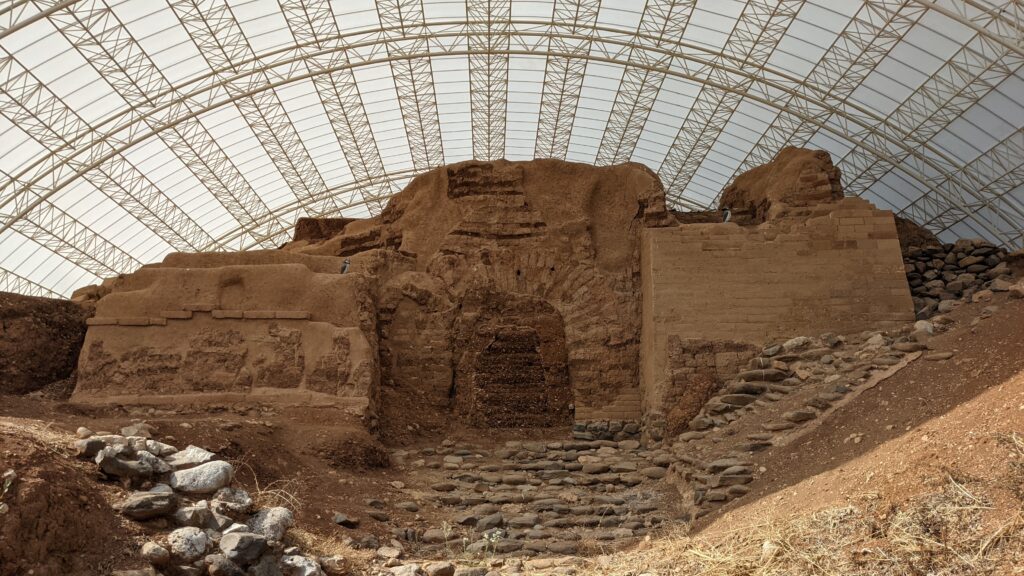
The Old City Gates from the Time of Abraham 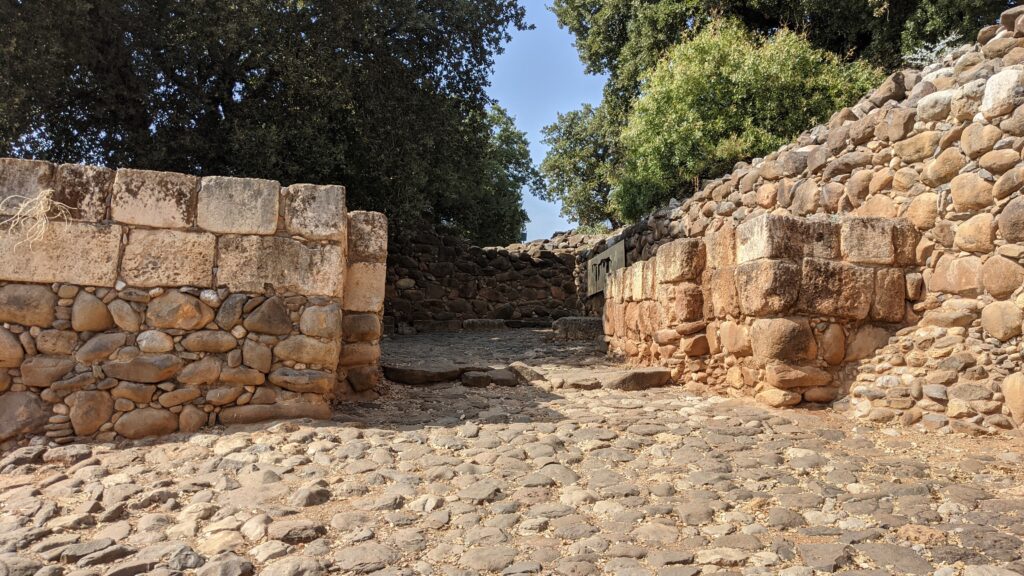
The Iron age City Gates 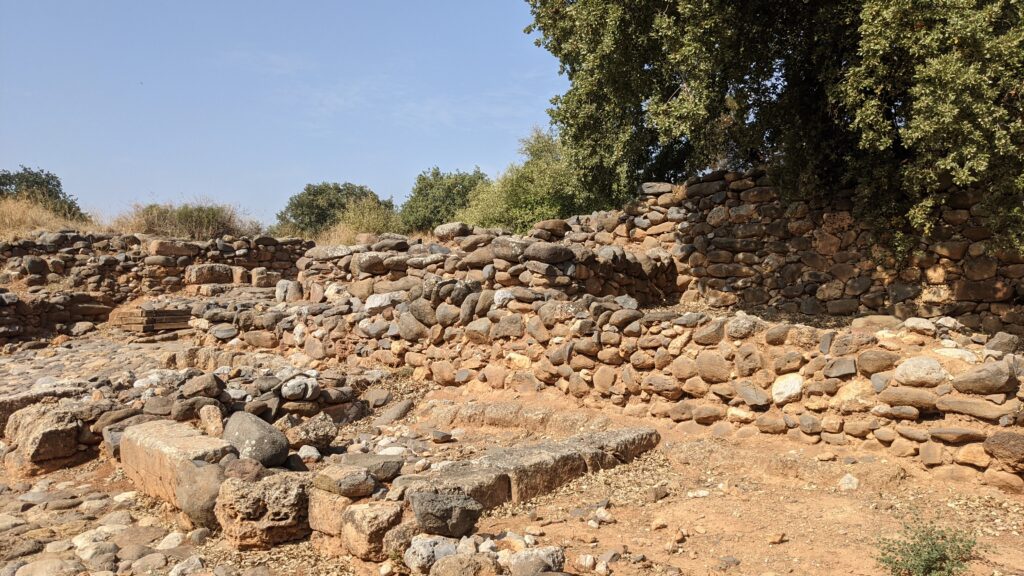
The Remains of Dan 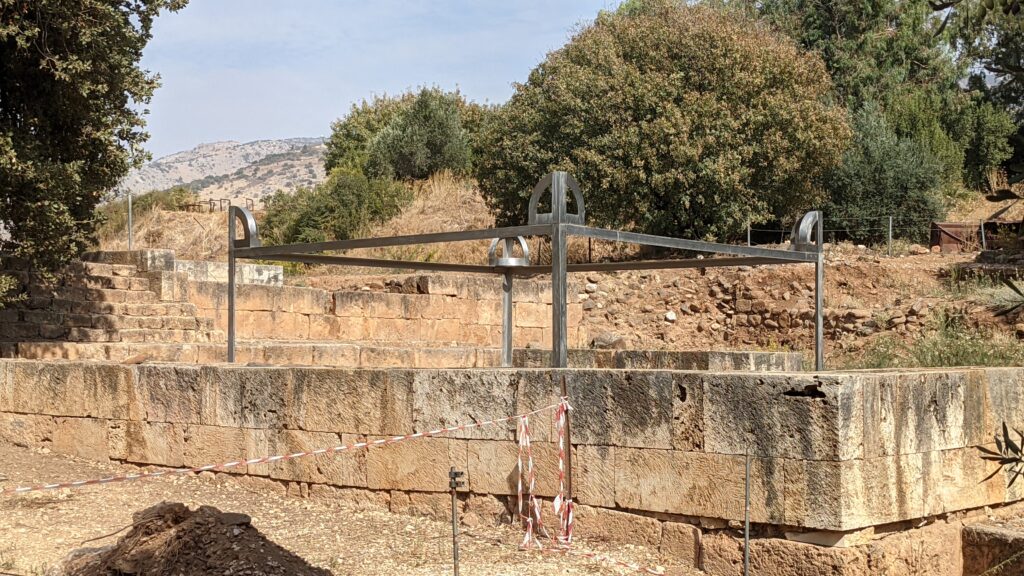
The Old Altar to the Golden Calf – The Metal Frame Shows what the Altar may have Looked Like
After the City was resettled by the Danites, it soon became a place of Idolatry. After the division of the kingdom into the northern kingdom of Israel, and the southern kingdom of Judah. Jeroboam, king of Israel, set up a shrine to a golden bull (a symbol of Ba’al) at Dan. This decision led the northern kingdom of Israel into abject idolatry, and eventually led to their destruction by the Assyrians.
If Dan is a picture of Israelites adopting the Canaanite religions, then Caesarea Philippi is the posterchild for Invading Idolatry. Built by Herod Philip, one of the sons of Herod the great, and brother to Antipas. This city embraced the Greco-Roman pantheon of gods and had temples and altars to several of these gods built into the base of the mountain. The largest one, the temple to Pan, the god of the wilds, sat directly in front of a cave carved by the mountain spring.
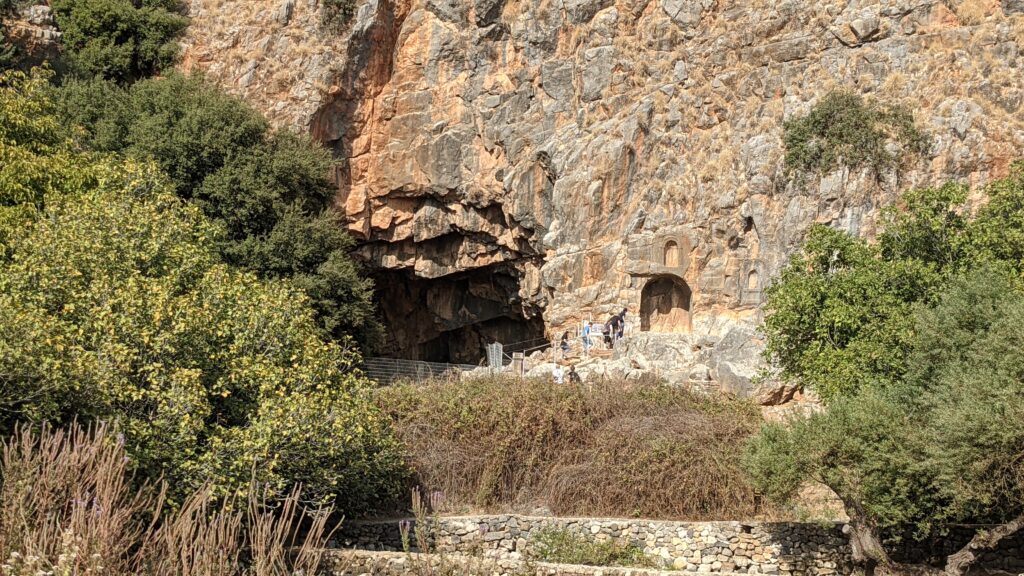
The Cave of Pan at Caesarea Philippi 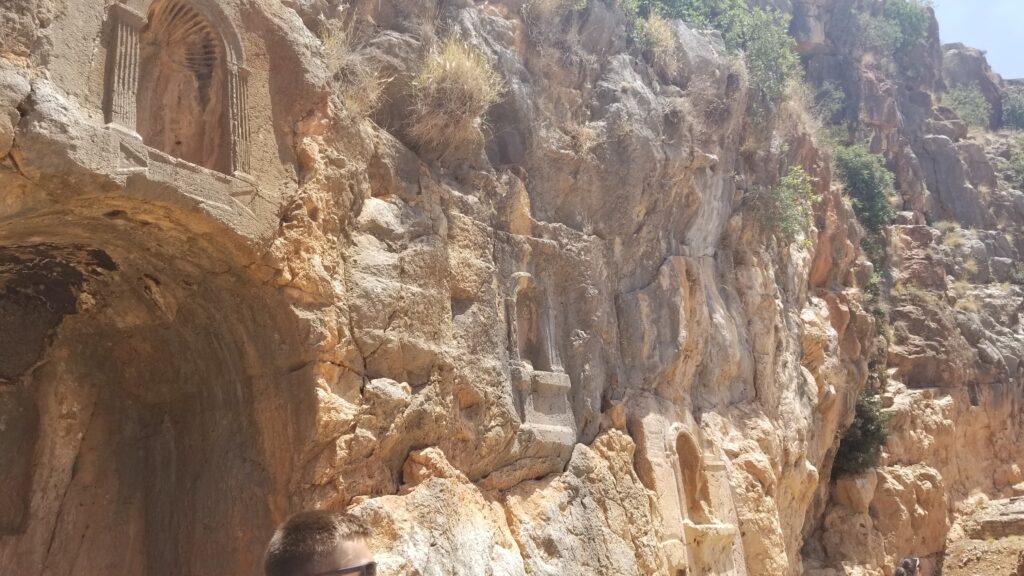
Stands for Idols Carved Directly into the Stone 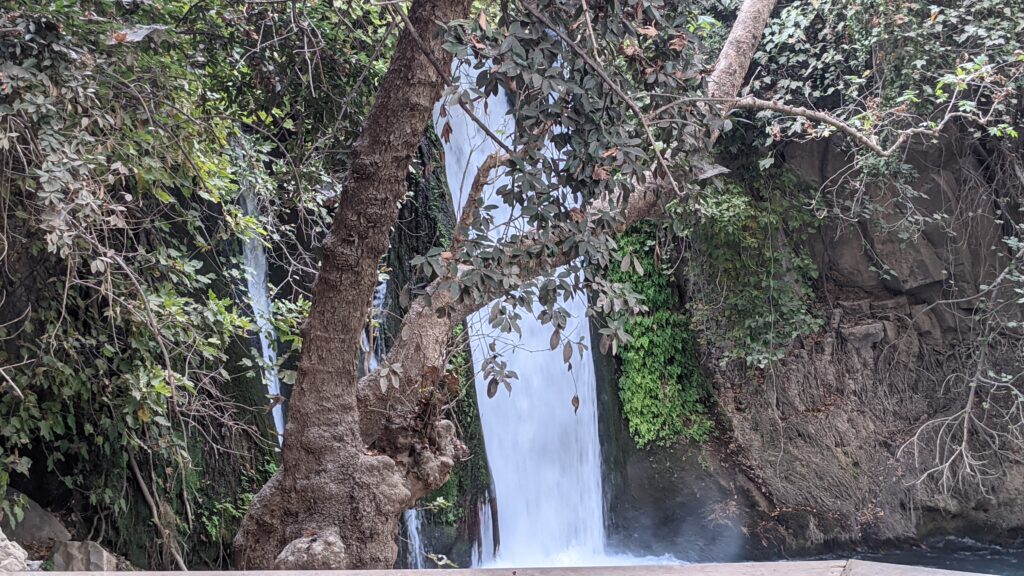
The Spring of Banias, Flowing from Caesarea Philippi
Strangely enough, the Gospel of Mark lists this area as a place that Jesus took his disciples to as a retreat to get away from the crowds, to focus on teaching his disciples. Such a pagan area doesn’t really make for an ideal spiritual retreat. However, Jesus’s words and action, at Caesarea Philippi reveal an interesting theme that runs throughout scripture.
And Jesus went on with his disciples to the villages of Caesarea Philippi. And on the way he asked his disciples, “Who do people say that I am?” And they told him, “John the Baptist; and others say, Elijah; and others, one of the prophets.” And he asked them, “But who do you say that I am?” Peter answered him, “You are the Christ.” And he strictly charged them to tell no one about him.
And he began to teach them that the Son of Man must suffer many things and be rejected by the elders and the chief priests and the scribes and be killed, and after three days rise again.
Mark 8:27-31
Jesus here, about halfway through the book of Mark, reveals that he is indeed the Messiah, the Son of God, through Peter’s confession. He then uses his favorite title for Himself, the “Son of Man,” explaining that His role is to suffer and die for the sins of mankind. The name “Son of Man” is not an invention of Jesus, it appears prominently in one of the most interesting visions recorded in the Bible. Daniel chapter 7 describes a dream Daniel has which reveals the basic plan of God for redemption. In is he sees four beasts, representing the rulers and authorities, trampling the earth. But then they are defeated by another figure, “one like a Son of Man,” who is given eternal dominion over the earth, next to the ancient of days.
This prophecy recalls one of the most prominent messianic passages from the Old Testament, Psalm 110:1, “The Lord said to my Lord, ‘Sit at my right hand, until I put your enemies under your feet.'” Picturing someone sitting at the right hand of God, with their enemies being used as a footstool, this is one of the most quoted Old Testament passages in the New Testament. It fits well with the vision in Daniel 7, who names this character the “Son of Man,” the very name Jesus uses for Himself.
In Matthew’s account of Peter’s confession, Jesus says the following regarding Peter’s claim that Jesus is the Messiah:
“Blessed are you, Simon Bar-Jonah! For flesh and blood has not revealed this to you, but my Father who is in heaven. And I tell you, you are Peter, and on this rock I will build my church, and the gates of hell shall not prevail against it.”
Matthew 16:17-18
That is a statement of battle, declaring war against the “gates of hell,” perhaps referring to all the pagan idolatry permeating the area of Caesarea Philippi. Here is the Son of Man, and he has named his enemies. Immediately following this Jesus puts them, literally, under his feet. He goes up Mount Hermon, the tallest mountain in the Near East, which sits just above Casarea Philippi, and reveals his true glory.
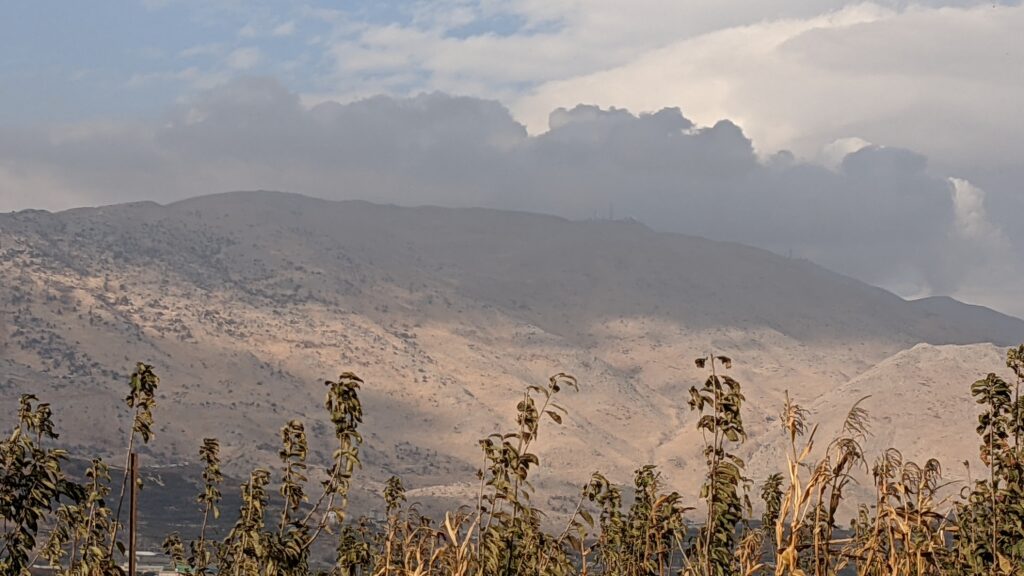
After six days Jesus took with him Peter and James and John, and led them up a high mountain by themselves. And he was transfigured before them, and his clothes became radiant, intensely white, as no one on earth could bleach them. And there appeared to them Elijah with Moses, and they were talking with Jesus… And a cloud overshadowed them, and a voice came out of the cloud, “This is my beloved Son; listen to him.”
Mark 9:2-7
Jesus goes up on the mountain, revealing His true nature as the Son of God, literally standing on the top of the mountain into which all the temples of Caesarea Philippi are carved. His enemies are, symbolically, under His feet, victorious, and after His death and resurrection, He sits down at the right hand of God, waiting for God to fulfill the end of the prophecy of Psalm 110:1.
I could go on, but this post has already stretched on long enough. I recommend listening to the Bible Projects podcast series on the Son of Man to learn more.

Nancy
MaryAnn